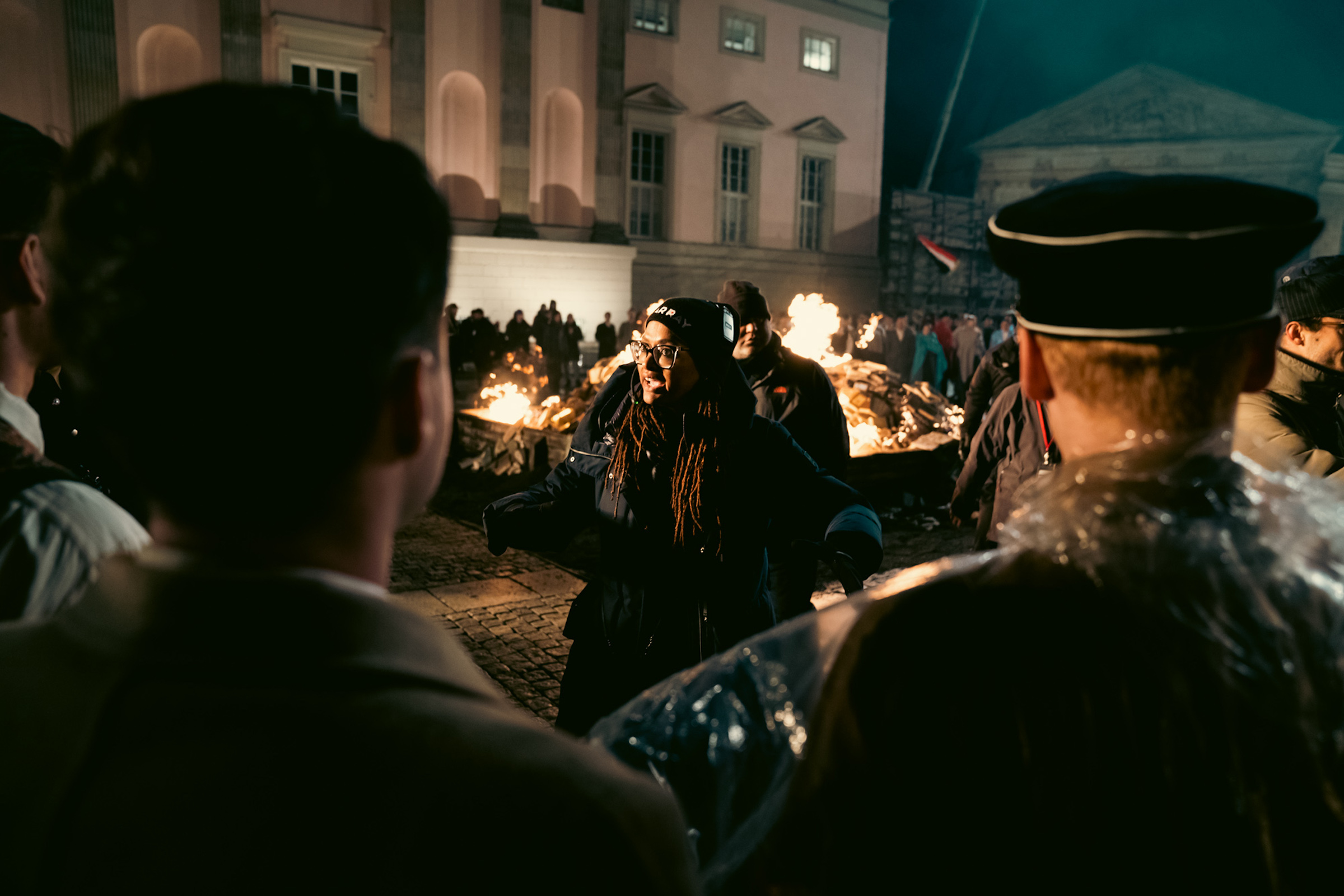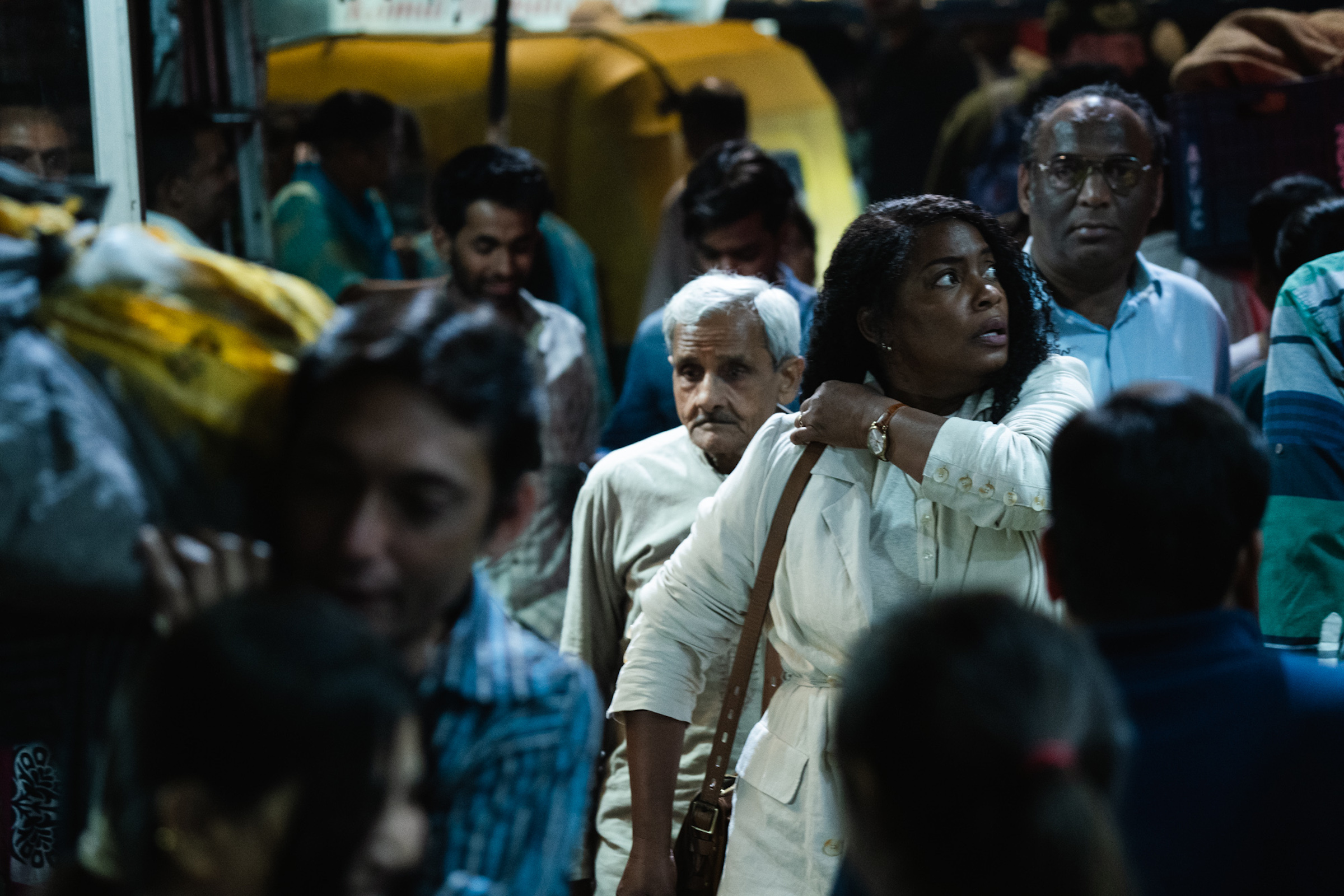For filmmaker Ava DuVernay, who made Selma, 13th, and When They See Us, the journalist Isabel Wilkerson’s watershed 2020 book Caste: The Origins of Our Discontents (recommended to her repeatedly by Oprah) was full of seeds. Moments planted throughout the book made her itch to know more.
Caste is a seminal work that connects the dots between the ancient, entrenched caste system of India, slavery and Jim Crow laws in the U.S., and the Third Reich of Nazi Germany. In deeply researched accounts, Wilkerson posits that the three places are linked by caste, something bigger than racism that explains why humans feel the need to subjugate others, and how they accomplish it.
DuVernay was drawn to the moments in the book centered on specific people—and as she found out more about them, they grew to form the story of her latest film, Origin, an adaptation of Caste out in theaters on Jan. 19.
In Caste, Wilkerson mentions August Landmesser, the only man in a 1936 photograph of a crowd of Germans who did not heil Hitler. DuVernay delved deeper and learned Landmesser’s story: a member of the Nazi Party, he was expelled after marrying a Jewish woman named Irma Eckler, imprisoned, and later drafted into penal military service, where he was killed in action. Eckler was forced into a concentration camp and later murdered.
Landmesser and Eckler become fully realized characters in Origin, which draws out their love story, forbidden by the Nuremberg Laws enacted in 1935. The film also weaves in the story of Elizabeth and Allison Davis, two Black anthropologists who co-wrote the groundbreaking book Deep South: A Social Anthropological Study of Caste and Class in 1941. In Caste, Wilkerson writes about their dangerous undercover work studying race in Natchez, Miss., and DuVernay expands that story. The couple, it turns out, had previously been studying in Berlin on the cusp of the rise of Nazism.
In adapting Wilkerson’s treatise into a deeply human story, brimming with real people full of life on three continents, DuVernay turned the author herself into a character, played in Origin by Aunjanue Ellis-Taylor, who grapples with waves of grief while working on her book.
Speaking with TIME from a car in a snowy Manhattan in January, DuVernay discussed how turning Caste into a movie allowed her to tap into new modes of storytelling. The conversation has been edited for concision and clarity.
TIME: What was going through your head when you finished reading Caste?
After I read the book, I was ignited by all of these new ideas. I didn’t understand them all. I wanted to wrestle with them more. I wanted to dig a little deeper, so I read it again, and then I read it a third time. And each time, my connection to some of it — things I agreed with, things I disagreed with, things I wanted to know more about — it was all swirling around in my head in a way that was very exciting to me. To learn, to be provoked, just to lean into something new.
Were there characters that leapt out of the book for you? And what did you add of your own?
The book is an anthropological thesis that focuses on the distillation and the sharing of a generations-old, deeply entrenched social phenomenon. It’s got facts, it’s got figures, it’s got some anecdotes, with a character or two here or there. But there’s not one character or a character-driven story or even a plot-driven story that you can follow, beginning, middle, and end. That’s the kind of thing that we look for as screenwriters.
And then just anything that has to do with Isabel Wilkerson herself: She was generous enough to give me two years’ worth of interviews during the pandemic on Zoom, and hours-long conversations and texts and emails, engaging with me and answering all my questions about her personal life and the losses of her family and the ways in which she triumphed through grief to write this book.

I really tried to break the boundaries of how I was taught storytelling should go: That this could have historical elements, contemporary elements, surreal elements; that it could blur the line between narrative and documentary; and you could use non-actors with actors with people playing themselves. And that I don’t have to put a lower third on everything and tell you where you are and what year it is; that I can say, “This is all one thing, and it doesn’t matter where it happens or when it happens. It’s caste, and it looks all of these different ways.” And that audiences are smart enough and wise enough to not need those kinds of markers.
There’s a scene, maybe 30 minutes in, after Isabel loses her husband and her mother within a year of each other. She lies, eyes glazed over, on a bed of dead, dried leaves as more brown leaves fall slowly around her. Where did that personification of grief come from?
That’s the personal visual that I brought to the picture from my own experience with grief. I think as an artist, we have to—especially when we’re adapting or chronicling real people, real events—put our fingerprints on it in various ways. That scene is how I feel when I lose someone.
I know you wanted to get Origin into the world before the 2024 U.S. presidential election. Why was that so critical?
I think that we’re in a state of emergency that not enough people are attuned to. I’m just a filmmaker, all I do is make films. What I can do is make a movie about how I feel and what I want to draw people’s attention to. And the hope is that more and more artists, more and more advocates, more and more people become activists. Activist just means raising your voice in whatever way works for you.
But this is a time when we need to be alert. We need to be aware of the stripping of freedoms and rights. The intention of certain people to distort history, to say it doesn’t matter, to say it never happened. And books being taken off shelves, information being contorted. This is the time when we have to push through our fatigue and open our eyes and engage. Hopefully this film contributes to that in some way.
You’ve said that humans “will always figure out how to bifurcate and categorize and create hierarchy,” that they’ll always develop castes. How do we get people to stop doing that?
I believe that if enough people become interested in civility, if enough people become interested in dignity, human dignity for people who don’t look like you, that there could be a shift, a bend towards justice, towards freedom for more people. I think it’s possible. Will it be in our lifetimes? I’m not sure. But there’s an old proverb that says, “We sit in the shadow of trees we did not plant.” And we have to plant those seeds now for the future. So I hope that this film stirs some of that conversation, some of that thinking.
What does it mean to let this film be independently financed? What kind of creative freedom did that grant you?
It gave me the ability to cast Aunjanue Ellis-Taylor as the lead. This is her first time as a lead in a major picture. A 50-year-old woman, incredibly accomplished, magnificently talented, who’d never been tapped to play the lead. And you look at what studios say the leads of films, what those people need to be like, look like, have done. The popularity, the social media aspect, all the math that’s done to approve someone to be a lead in a picture. And oftentimes [there] is a disconnect between that and the quality and talent needed for the character. So by being independent, it allowed me to cast all of my dream actors for these roles. And this cast would not exist if it was a studio picture.


